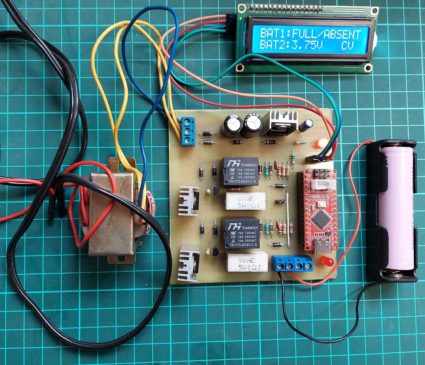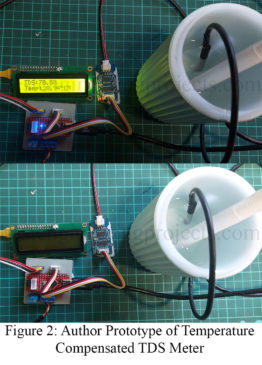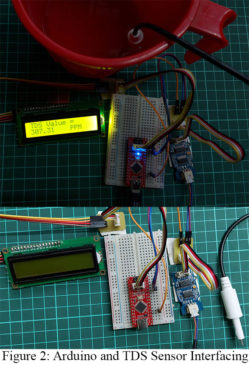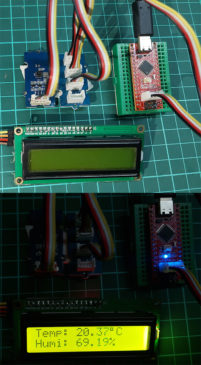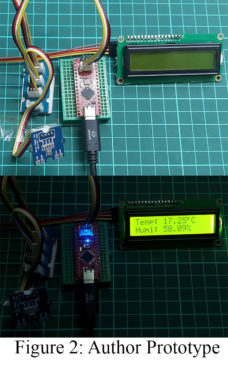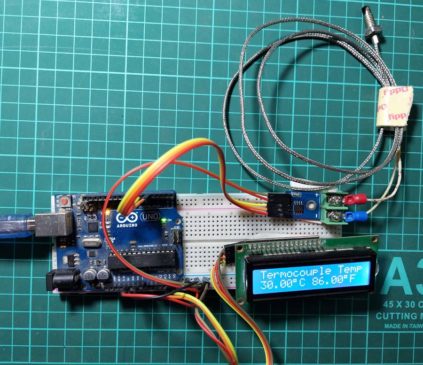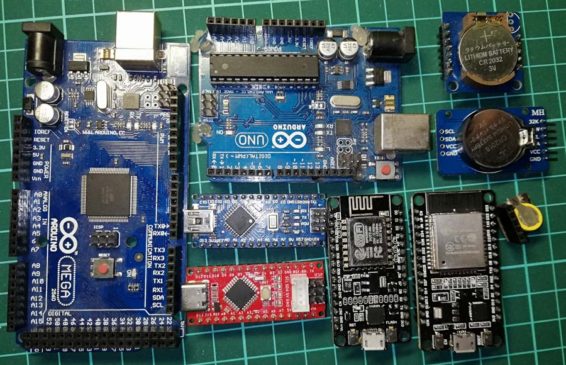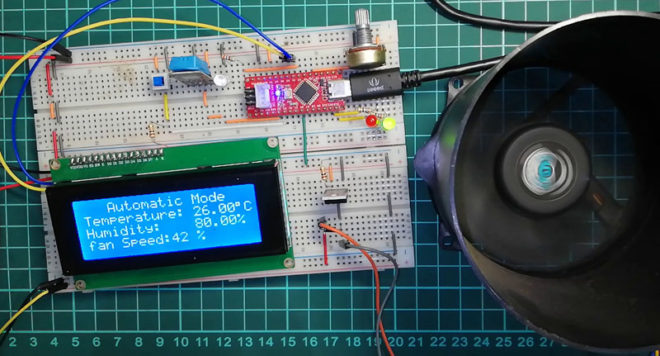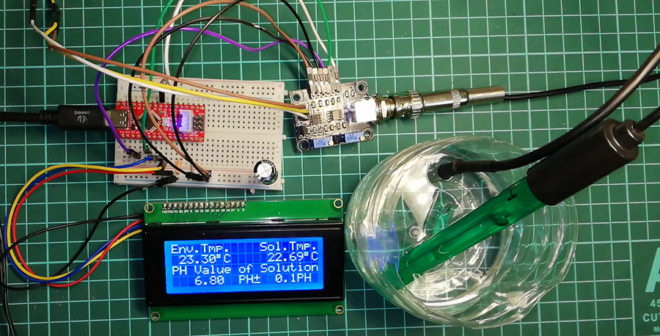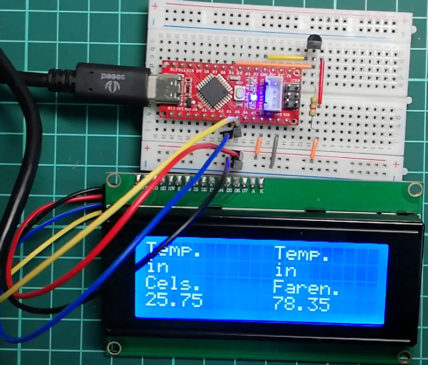Amongst the rechargeable batteries available on the market, Lithium Iron Phosphate battery (LiFePO4 battery) or LFP battery (Lithium Ferro Phosphate) is widely used due to the various benefits offered, compared to other batteries. Longer life span, highly safe, lightweight, improved discharge, and charge efficiency are some of the advantages provided by the LiFePO4 batteries. In the market, you will find different types of LiFePO4 battery chargers that may or may not fulfill your requirements, and you may find them expensive. Previously, we had already discussed a DIY LiFePO4 battery charger…
Read MoreCategory: Arduino Projects
Temperature Compensated Arduino TDS Meter
In this article, you will learn about the effect of temperature on the TDS of water and finally, you will learn how to make a “Temperature Compensated Arduino TDS Meter”. TDS (Total Dissolved Solids) is the sum of organic and inorganic substances dissolved in water and, the methods used for the measurement of TDS value are Gravimetric Analysis and the Measurement of Electric Conductivity (EC). The gravimetric analysis provides reliable TDS value but it is time-consuming and is not very applicable when analyzing a lot of samples. So the measurement…
Read MoreTDS Sensor and Arduino Interfacing
In this article, you will learn about TDS Sensor and Arduino Interfacing. TDS stands for Total Dissolved Solids and represents the amount of total dissolved solids (organic and inorganic substances) in water. TDS value is related to water quality. Typically, the higher the TDS value, the poorer the water quality. Pure water has a TDS value of 0, and the TDS value increases for increasing dissolved solids. But do remember that measuring the TDS value doesn’t provide you with the information on whether the dissolved solids are healthy for the…
Read MoreInterfacing Temperature and Humidity Sensor TH02 with Arduino
TH02 is a consumer-grade digital temperature and humidity sensor. Although it can operate with a humidity range of 0-100% RH, it provides reliable or highly accurate data when the environmental conditions are between 0-70°C and 0-80% RH. The reason to use the TH02 sensor is that it provides a reliable reading in most home and daily applications if operated at its measuring range. It comes with its output calibrated in standard I2C format. In this article “Interfacing Temperature and Humidity Sensor TH02 with Arduino”, you will learn how to interface…
Read MoreInterfacing AHT20 with Arduino
AHT20 is a temperature and humidity sensor that utilizes a MEMS semiconductor capacitive humidity sensor and a standard on-chip temperature sensor. It has better performance and is more stable in harsh environments compared to DHT11, DHT22 which are commonly used temperature and humidity sensors. It has an astounding humidity measuring range of 0-100% RH with humidity accuracy as low as ±2% at 25℃. It comes in an SMD package and its output is calibrated in standard I2C format. In the article “Interfacing AHT20 with Arduino”, you will learn how to…
Read MoreHow to Arduino Thermocouple Interface
How to Arduino Thermocouple Interface: In this article, you will learn about interfacing K-type thermocouples and display temperature in Celsius and Fahrenheit on I2C LCD. Introduction of Thermocouple A thermocouple consists of a pair of dissimilar metal wires joined together at one end, called a sensing junction, and terminated at the other end, called the reference junction which is maintained at a known constant temperature called the reference temperature. When the sensing junction and the reference junction are at different temperatures, a potential difference gets produced which causes a current…
Read MoreHow to interface RTC module with Arduino and ESP Board
Here in this article, you will learn about the RTC module and how to interface this module with Arduino and ESP boards like Arduino MEGA, Arduino UNO, Arduino NANO, ESP32, Node MCU, and Arduino NANO. How to interface RTC module with Arduino and ESP Board RTC acronymic for Real-Time Clock is an electronic Integrated Circuit (IC) that keeps track of time around the clock. It is more like a computer clock where once we set it up gives us accurate time even after the power outage. Before we delve into…
Read MoreAutomatic and Manual Temperature Control unit
Automatic and Manual Temperature Control unit: Automation have reached almost everywhere whether it is home automation or agriculture field. Automation system collect different parameter such as temperature, humidity etc. in real time basis and keep control of fan, moist control etc. But sometime we need manual control over various actuator or load like motor, fan etc. wither testing of load or when automatic system does not work. This project is the modified version of Arduino Based Temperature Controlled Fan. Manual mode is also considered as backup mode with which we…
Read MoreArduino PH Meter using PH Sensor
PH is a scale with which we can determine whether the water-based solution is acidic or basic. PH is represented as the power of hydrogen or the potential of hydrogen (Source: Wikipedia). With the help of electrodes, we can measure PH of solution electronically which could be more beneficial to measure and automate PH of the aquarium, or hydroponic or aquaponic. So, in this article, we will learn How to make Arduino PH Meter. After completing this video one can Know about electrode and their working method Calibrate the module…
Read MoreInterfacing DS18B20 Temperature Sensor with Arduino
Interfacing DS18B20 Temperature Sensor with Arduino: This article is all about DS18B20 and its interfacing with arduino. DS18B20 comes in two variants: Normal and waterproof version. Normal version is available TO-92 and uSOP. Let’s start with introduction. Description of DS18B20 It is digital programmable temperature sensor based on one wire communication i.e. it requires only data line and common GND. Power supply is optional because this sensor can drain require power supply from data line and this mode called parasite mode. DS18B20 can provide different temperature resolution is 0.50C, 0.250C,…
Read More